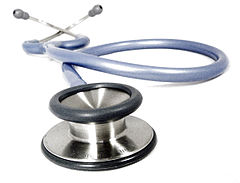 The High-Deductible Dilemma
The High-Deductible Dilemma
Hospitals and physician groups are carefully watching the growing popularity of high-deductible health plans (HDHP) which result in patients taking on more of a financial responsibility for their healthcare. HDHPs and health savings accounts (HSA) are meant to incentivize consumers to manage the costs of their healthcare. For 2015, the Internal Revenue Service’s definition of high-deductible is $1,300 for an individual and $2,600 for a family. Maximum out-of-pocket expenditures are $6,450 and $12,900 for individuals and families, respectively. Many, but not all, HDHPs include preventive care such as annual physicals or immunizations, as a no-cost benefit.
According to the National Center for Health Statistics, in 2014, 36.9 percent of persons under age 65 with private health insurance were enrolled in an HDHP, and only one-third of those consumers were enrolled in plans linked to HSA. With the out-of-pocket costs for patients increasing due to the popularity of HDHPs, and with so few purchasers taking advantage of savings plans, the risk of bad debt and charity care increases for healthcare providers.
The use of health insurance exchanges under the Affordable Care Act (ACA) is contributing to the rise in the use of HDHPs. Consumers using the exchanges are overwhelmingly selecting bronze and silver tier plans, which both have sizeable deductibles. The bronze deductible amount is set at $5,000 and the silver at $2,000. As a result they cover only about 60 to 70 percent, respectfully, of the patient’s total medical costs. Therefore, even though hospitals may be seeing more insured patients, many patients still have significant financial obligations to pay for their care.
http://www.medicoverage.com/health-insurance-blog/news/obamacare-exchange-plans-comparing-silver-bronze
The National Center for Health Statistics published a report in January 2014 that found one in four families experienced trouble paying medical bills in 2012. One in 10 had bills they were unable to pay. At the least, practices and hospitals can expect to see the length of time invoices spend in accounts receivable to grow. This is bad news for medical practices and hospitals because collecting from patients can be especially difficult. And when patients are faced with financial hardships, medical bills usually are not their first priority.
Many hospitals have already started to put in place new programs and processes to offset some of the effects of HDHPs by placing an increased focus on collecting for their services. New technology to verify eligibility and deductible status are rapidly coming online. Also, secure billing portals and online payment options are becoming a key component of the collection process. Point-of-service collections, requiring whole or partial payment at the time of the appointment, are becoming an increasingly popular way for hospitals to collect payments for procedures and visits. In addition, some providers are offering medical bill financing services, either directly or through partnerships with third-party banks and lenders.
These services allow consumers to make smaller payments over time to control the burden of upfront costs, often for negotiated total amounts with little-to-no interest. Many providers and hospitals are increasing patient communications to educate patients on the costs of their treatment. Patient advocates and counselors are increasingly meeting with patients prior to any elective surgical procedures.
While hospitals and larger provider groups are tackling these new processes, smaller doctor groups are struggling with the increased burden, especially when they have a relationship with the patient. The concern that patients may forego treatment due to having to pay more out-of-pocket is keeping some providers from being as transparent as they should be regarding the cost. This trend is forcing practices to think more like a business. A few years ago, a large portion of the medical bill was traditionally paid by commercial insurers, Medicare and other third-party payers. As a result, many practices simply are not equipped to efficiently collect deductibles and copayments from a greater number of patients. Surprisingly, some still do not accept credit cards or have an online payment system. Even worse, when the patient tells the practice that he or she will pay next time, practices are not following up to ensure that the patient actually does pay.
The Healthcare Financial Management Association (HFMA) Medical Debt Task Force has released a set of recommendations intended to improve the medical account resolution process for patients and doctors alike. The best practices provide guidance on resolving financial obligations before, during and after a patient visits a hospital or doctor’s office. HFMA partnered with ACA International (Association of Credit and Collection Professionals) and gathered a task force of stakeholders to develop these common-sense best practices.
Healthcare providers and their business partners using the best practices will be able to:
• Lay the groundwork for successful account resolution by educating patients and following best practices for communication prior to the time of service.
• Make bills and all communications clear, concise, correct and patient-friendly.
• Establish policies for account resolution and ensure that they are followed both internally and by business affiliates.
• Be consistent in key aspects of account resolution—from billing disputes to payment application.
• Coordinate account resolution activities with business affiliates to avoid duplicative patient contacts.
• Exercise good judgment about the best ways to communicate with patients about bills.
• Start the account resolution clock when the first statement is sent to the patient.
• Report back to credit bureaus when an account is resolved (in the event that an account is reported to a credit bureau).
• Track all consumer complaints.
• Use best practices, principles and guidelines to inform their organizational approach to medical account resolution.1
It is evident that a larger insured population does not necessarily mean decreased efforts on the part of healthcare providers in collecting payment for services rendered. Unfortunately, because many of the newly insured population participates in HDHPs, hospitals and physicians are sometimes faced with a greater burden of chasing patients for payment. As such, doctors and hospitals need to move quickly and take the necessary steps to reduce the negative effects HDHPs are having on their revenue.
http://www.hfma.org/Content.aspx?id=21231 1 – Published on MiraMed Global Service’s Blog
_____________________________
Phil C. Solomon is the publisher of Revenue Cycle News, a healthcare business information blog. He serves as the Vice President of Global Services for MiraMed, a global healthcare Business Processing Outsourcing services company. Phil has 25 years of experience in healthcare as an industry thought leader, strategist, solution provider, author and featured speaker. In this blog, you will read about important industry updates, strategies for
improving financial performance, and commentary that challenges the status quo.
The post High-Deductible Insurance and Rising Bad Debt appeared first on REVENUE CYCLE NEWS.










